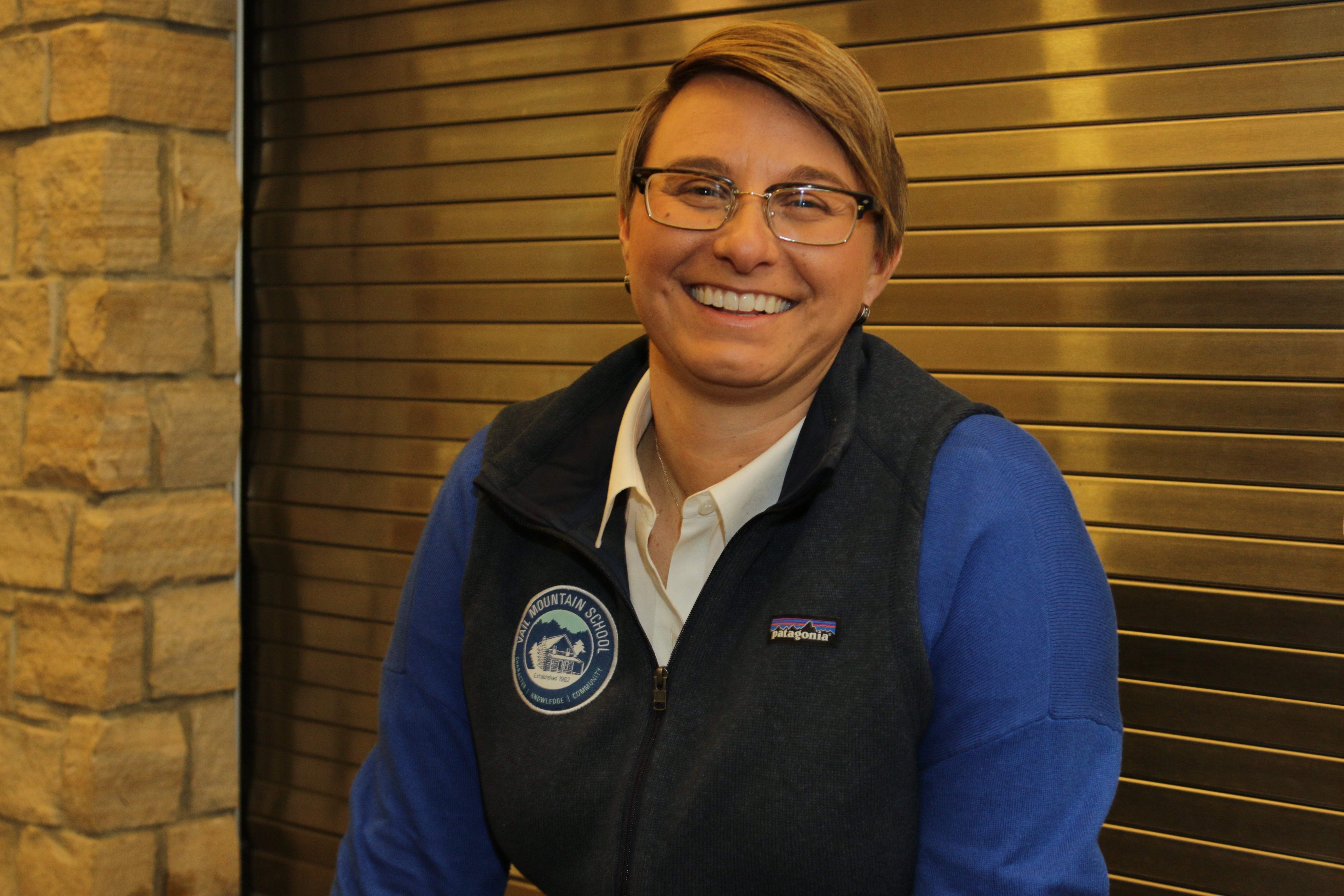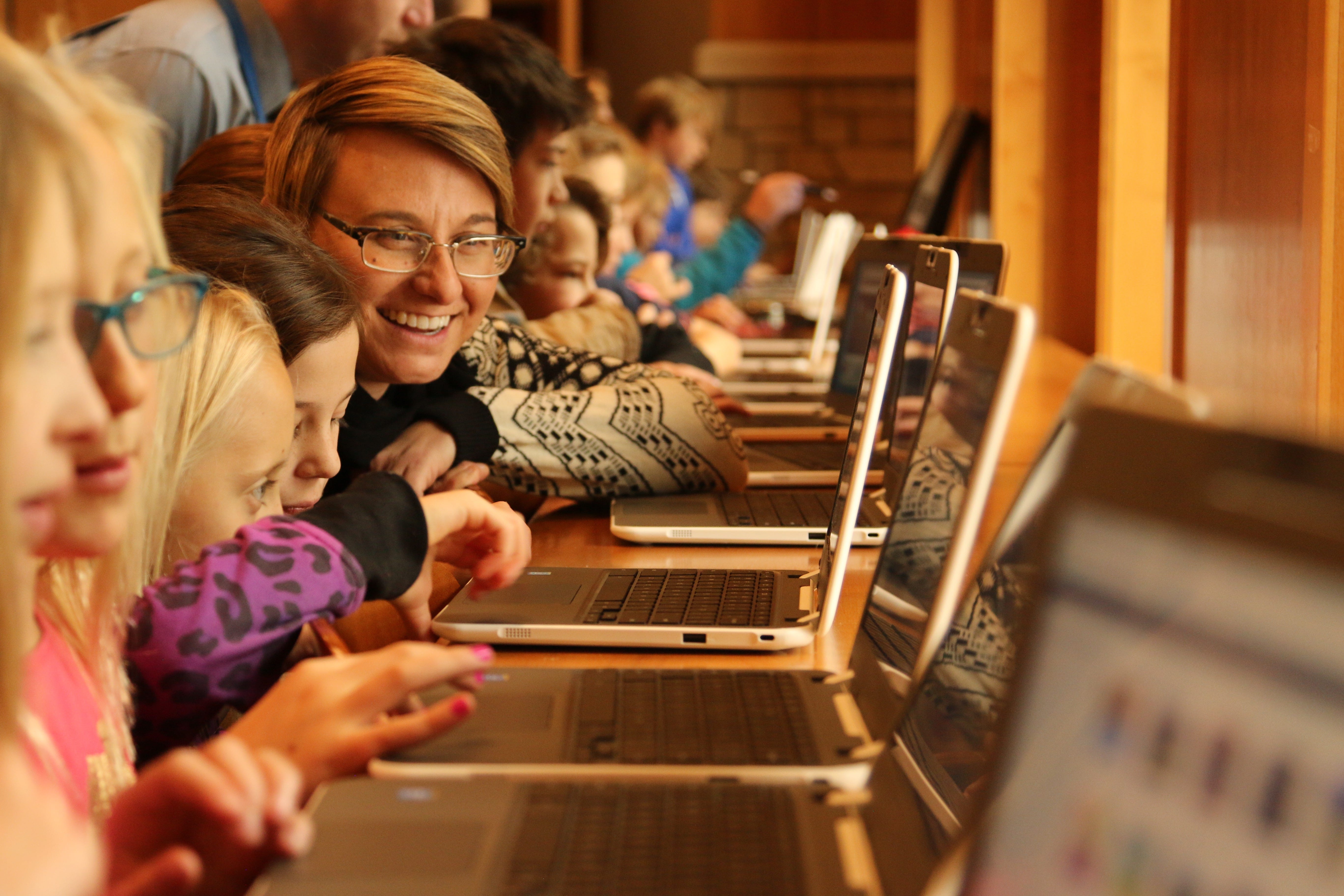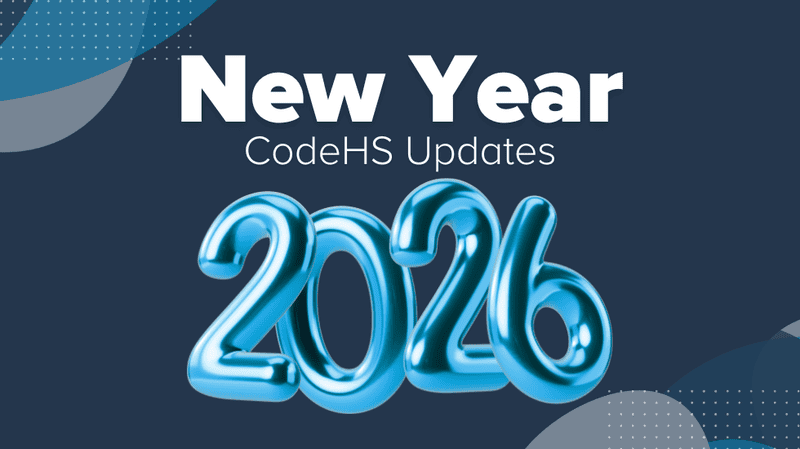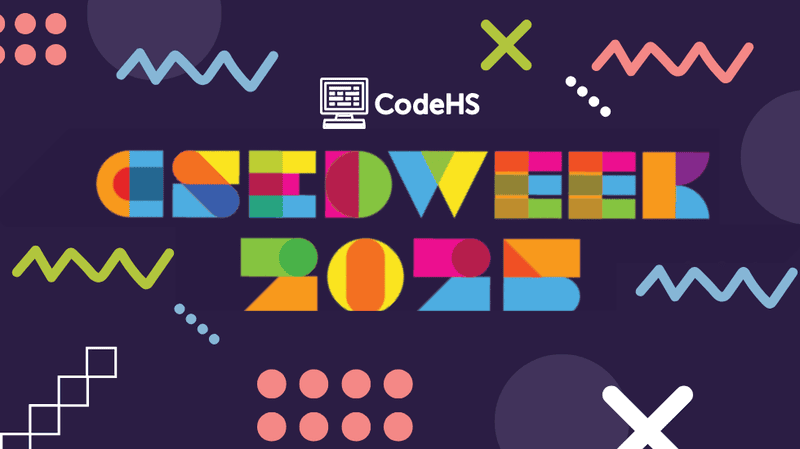Hello (World) From the Other Side
Kim Zimmer, Vail Mountain School

Kim Zimmer clicked “run” on her student’s most recent CodeHS program and saw appear on the screen:
“Hello. It’s me.
HELLO FROM THE OTHER SIDDDDDDEEEE!!!!”
It wasn’t exactly what the exercise had asked for, but Luke had written a function and used the println() command as the problem sought to have students practice and, perhaps most importantly, Kim thought it was hilarious. The song has been all over the radio, and now it was showing up in her coding class. Later that week, Kim presented Luke with the “Coder of the Week” award, giving him a shout out as the “Comic Coder.”
Coder of the Week awards allow Kim to recognize the work her students are doing and doing well. And, it allows students to recognize each other. In this case, Kim was excited to see Luke work creatively: “He’s taking it and having fun with it! That’s great!” A few weeks earlier, another students had received the “Midnight Coder” award. Using teacher tools on CodeHS, Ms. Zimmer could see that this particular student was going home and zooming through the CodeHS curriculum late at night. The awardee gets the class’s stuffed Karel dog, a sticker, and they have the fun task of taking a photo of Karel doing something that then gets posted on the class’ web page.
“He’s taking it and having fun with it! That’s great!”
Coder of the Week awards epitomize Ms. Zimmer’s classroom — authentic, fun, inviting, and inspiring. Students are celebrated for their work and encouraged to have fun exploring a subject that Kim says many had never even considered before. In her class, Ms. Zimmer thinks a lot about helping students with career preparedness. She reflects that once you get to the high school level in a lot of other subject areas, like math or science, you start thinking about different careers, but for some reason computer science still is not a career that her students consider. That’s why in Kim’s class, “we debunk myths about computer science and give students the opportunity to explore it as a career.” Each class period begins with students reading an article about some application of computer science. Recently, the class read an article about how the perception of computer science is super geeky, but in fact, all different personality types are great at CS.
“We debunk myths about computer science and give students the opportunity to explore it as a career.”
This has led to a really fun and dynamic classroom that includes all sorts of different students. Some of her kids were naturally very “techy”. One of the reasons she originally decided to start teaching computer science was because she noticed that there were kids — both boys and girls — who were building computers and programming apps outside of school and she thought, “how can we bring that talent inside the classroom?” There were a cohort of girls and boys who were into this stuff and it seemed like a waste not to harness the natural interest and excitement for an academic subject. When Kim got to Vail Mountain School, she approached the high school principal and suggested that a computer science program was probably really worthwhile.
“I was convinced that despite my lack of knowledge in this area, I could still provide the opportunity for kids!”
As a tech integration specialist for the k-12, Kim was well aware of the growing momentum to teach computer science in public schools and wanted to get involved. “I was convinced that despite my lack of knowledge in this area, I could still provide the opportunity for kids!” At first she focused on a K-5 curriculum — without a background in computer science it was still easy to pick up the fundamentals of coding and start the students on some block coding challenges. Eventually, she was able to extend her knowledge and work robotics and coding into the elementary school curriculum. When it came to the high school level though, it was really CodeHS that allowed her to dive into teaching some real programming: “Without CodeHS, there is no way I would have gotten into the realm of teaching JavaScript or other professional programming languages!”
“Without CodeHS, there is no way I would have gotten into the realm of teaching JavaScript or other professional programming languages!”
Kim had been looking for a self-paced curriculum and professional development course to help get her up to speed and in a place where she could start offering the elective class at the high school level. When she stumbled across CodeHS, she said, “this is exactly exactly what I’m looking for!” She gets to learn, work with the students and teach herself as she’s teaching the kids. A big part of her approach is realizing that, “I didn’t necessarily have to be the stand-alone-expert on this subject, but I could support the students because all of the resources are there.” Her students appreciate that approach, too — they know she doesn’t have a huge amount of background or experience in computer science, but she’s always available to help and work through problems with them. “I don’t have to be the expert, but as long as I’ve been providing those diverse experiences for students, I’m doing the right thing.”

The class is going really well and Kim does a great job of both utilizing all parts of the curriculum, teacher tools, and resources as well as fostering discussion and collaborative activities offline. Students take part in a discussion forum to analyze the articles they read about the importance of computer science, tying the work they’re doing in class to the real world. When it comes to the curriculum itself, just letting students work at their own pace is surprisingly effective: “It’s kind of amazing to see 15 students all on that website working.” For the rest of the time, Kim walks around answering questions and working 1-on-1 with students. It’s been a great success, students are enjoying the class and 2 of her girls have already said that they want to pursue computer science in college. Kim says CodeHS has helped create that enthusiasm, excitement, and interest: “You guys are totally nailing it!”
“I don’t have to be the expert, but as long as I’ve been providing those diverse experiences for students, I’m doing the right thing.”
Eventually, Kim hopes to turn the computer science class into a math or science credit, rather than an elective. For a school situated in the snowy mountains in Vail that offers a ton of outdoor electives like skiing and snowboarding, she knew it may be hard to attract a ton of kids to take an elective coding class. But, she says, “word is getting around that it’s a cool class!” She looks forward to helping the program grow in future years: “Once I have a full year of being with students and seeing all the questions that pop up I’m just going to keep getting better and better at teaching it!”


